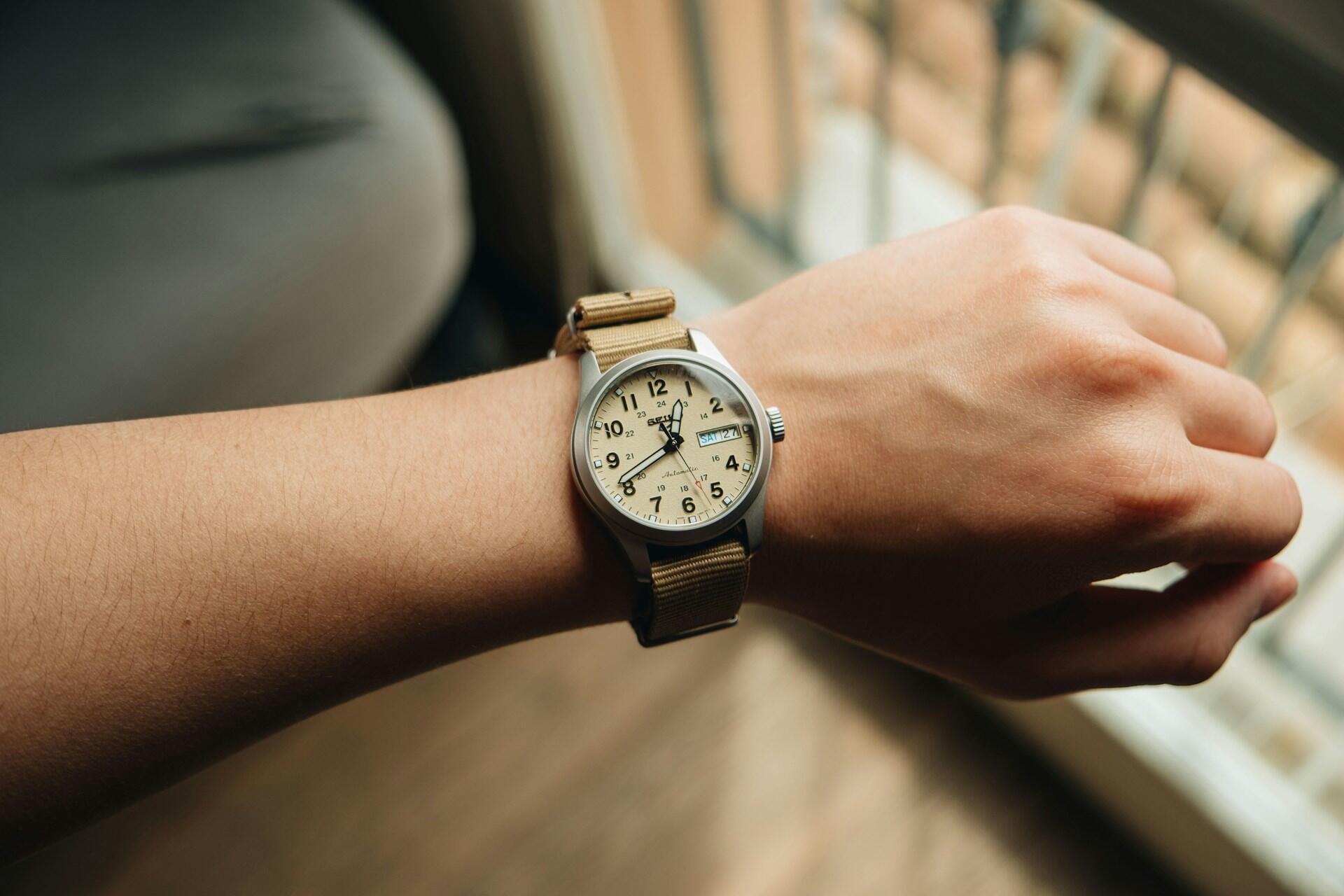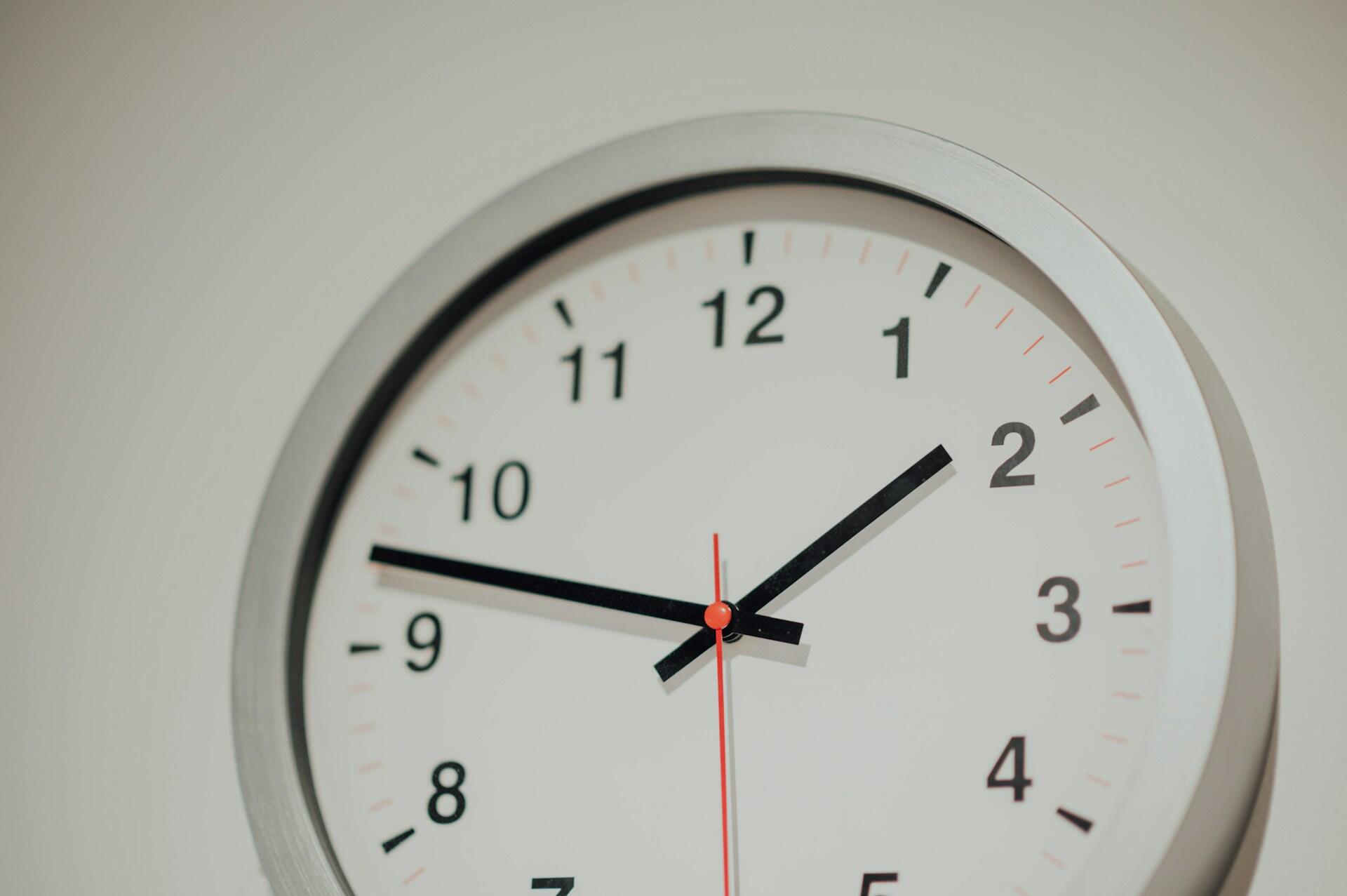Knowing how much stamina and endurance you’ll need during the SAT is one of the crucial components of preparing for the assessment properly. Taking practice SAT tests with a time limit is a great way to make sure you will not struggle on test day.
The SAT Weekend test consists of two sections:
- Reading and Writing: 64 mins.
- Math: 70 mins.
to complete (not including breaks)

Detailed Breakdown of the Digital SAT Timing
The SAT itself is 2 hours and 14 minutes in duration. Of course, there are other tasks to do on the date that make the total duration you spend at the testing facility much longer, but we’ll talk about that in the next section.
Make sure you're prepared for this college entrance exam well in advance to have the most successful experience possible.
The SAT begins at 8 AM sharp. Arrive by 7:45 to ensure admittance to the testing center.
The examination structure is as follows:
- Reading and Writing Section:
- Module 1: 32 mins., 27 questions
- Module 2: 32 mins., 27 questions
- Break: 10 minutes
- Math Section:
- Module 1: 35 mins., 22 questions
- Module 2: 35 mins., 22 questions

Reading and Writing Section
minutes
multiple choice only
modules
The Reading and Writing section consists of short passages paired with a multiple-choice problem.
This section tests the student’s ability in four major areas: information and ideas, craft and structure, expression of ideas, and standard English conventions.
Math Section
minutes
30-34 multiple choice, 10-14 grid-in
modules
The Math section consists of the most vital areas: algebra, advanced math, problem-solving and data analysis, and geometry and trigonometry.
Questions are both multiple choice and student-produced responses (aka grid-in), so you’ll need to be able to solve problems without multiple answers to choose from.
Breaks and Total Test Duration
not including breaks
with (1) 10-minute break between sections
in both sections combined
Between the Reading and Writing Section and the Math Section, you’ll have a 10-minute break to stretch and walk around, eat a snack, have some water, and use the restroom.
Be mindful on your breaktime (bringing a silent, non-Smartwatch is a good idea!). Your assessment clock will restart whether you’re in your seat or not.

Preparing for the SAT: Time Management Strategies
Now that you know more about the duration you’ll have for answering which types of questions on the SAT, the next step is to improve managing your time.
The actual problems on the SAT are not extremely difficult. In fact, each student will receive a mixture of easy, medium, and hard questions on their exams. The adaptive test is also able to give each student more of the type of problems that suit their ability in module 2, based on module 1.
No matter how difficult the problems you encounter are, the key to getting through the SAT without missing any questions is to be able to answer them quickly. Here are some tips for improving your SAT-answering abilities.
The actual academic content on the SAT is not that hard. Most of the material consists of concepts you've been learning for at least a year. The hardest part of the assessment is that the questions are confusingly worded, combined with a strict timespan, which causes stress.
Practice with Timed SAT Sample Tests
One aspect of taking the SAT is being able to gauge how long you’re spending on each problem without looking at a clock or timer.
Every glance at the clock is a distraction, making it harder for your brain to stay focused, which will slow you down, make you feel more tired, and cause you to lose out on points.
Instead, you need to develop an internal sense of time. You don’t have to be perfect, but you need to have a vague idea of what a minute feels like.
The average duration you have per question in each section is:
1 minute 11 seconds
1 minute 36 seconds
Being able to mentally track one minute means you can more accurately guesstimate the interval spent on a question and allocate more or fewer seconds to the next problem(s) accordingly.
The only way to hone this instinct is by conducting practice tests with a timer. Answering correctly isn’t the main goal in these exercise sessions; you are focusing on understanding the passage of time.
Glance at a timer every 5-10 or so problems to see if you’re accurately tracking in your head, and get in the habit of doing this to make it easier during the real evaluation.
Learn How to Answer SAT Questions Faster
SAT questions are not like regular examination problems. Each multiple-choice answer has exactly 1 right answer, which can often be deduced from the wording of the text passage, question, and provided answers.
Understanding how SAT questions are crafted means you can break them down at a meta level to have a better comprehension of what is actually being asked and what they’re looking for as a response.
There are many ways to tackle this type of studying, so check out our study guide for more information.
Time Management Techniques for Test Day
During the examination, you’ll need to implement some expeditious techniques for maximum efficiency. Exercise these skills during your SAT prep study regimen.
Take practice tests on Bluebook in advance to get familiar with the layout and interface, the available tools (timer, highlighting and annotations, calculator, formulae, etc). Drill taking the Reading and Writing and the Math sections individually and paired together with the 10-minute break in between (complete with snack, water, etc., and NOT using your phone!) to get used to the examination format.
Your Digital Timer
Avoid feeling the added pressure of a ticking clock by simply hiding the built-in timer. If you've practiced your efficiency skills, you'll know roughly how long each problem is taking you, anyway. Check periodically, but don't let the clock intimidate you.

Scan Your Questions
Begin reading a question, and if you immediately understand where it’s going and what to do, stick with it. If you’re immediately feeling lost and can’t concentrate on it, move to the next problem. Go back and work on the harder questions later.
Utilize Your Tools
Leave annotated notes on problems you need to go back to to help you remember what exactly was tripping you up at first glance.
Sometimes, reading a difficult question and then moving on gives your brain space to ponder the answer in the back of your mind. Going back and having a reminder can help your brain recall any information it came up with while you were busy focusing on other questions.
Additional Timing Considerations for Test Day
Taking the assessment is only part of the whole procedure. Don’t make the mistake of thinking the actual exam is the only thing you need to consider for scheduling!
Be sure to consider these additional scheduling factors:
Remember to factor in traffic, construction, and other obstacles.
If your test center is too far away to commute, you may need to get a hotel for the night before. Make sure your ride/parent/chaperone is aware of the necessary commitment well in advance!
Hopefully, you can wake up quickly due to the excitement (or stress), but even if you do, you still need to build in time to prepare your body and mind in the hours before arrival.
Get at least 8-10 hours of sleep, eat a good dinner and breakfast, avoid things like energy drinks with too much caffeine, which can make it hard to focus, and set aside at least 10 minutes to stretch, take deep breaths, and relax.
Have all the items you need to bring with you in a bag and ready to go the night before.
If yes, you need to arrive between 7:15 and 7:30 AM (half an hour earlier than everyone else) to get set up.
If yes, let your ride know when you expect to be out of the exam, if applicable.

Check-In Procedures and Start Times
The digital SAT is conducted at an official facility on a pre-arranged date. Students must register for the SAT test date at least 15 days in advance (or 11 days in advance, with a late registration). However, it’s best to register for a date much sooner, even months beforehand.
If your ride asks, "What time does the SAT start?" be sure to tell them you must arrive by 7:45, else you might miss check-in.
You’ll need to bring a suitable device for testing and ensure that you have completed installing and setting up the Bluebook app in advance.
If you don’t have the ability to bring your own device, you’ll need to apply to borrow a device from the CB at least 30 days before the assessment date.
1) Personal or school-managed Windows laptop or tablet
2) Personal or school-managed Mac laptop or iPad
3) School-managed Chromebook (personal Chromebooks aren't permitted)
Your device will also need to have the Bluebook application installed and set up before you arrive, preferably at least 5 days in advance.
When you arrive for your SAT, you’ll present your admission ticket and photo ID and check in with your proctor. They'll communicate vital information to the attendees, students will set up their devices, and the proctor will issue a commencement code.
Once you enter the start code, your assessment begins.
Unlike the classic, paper version of the SAT, the digital SAT allows examinees to begin (and finish) at slightly different times.
So, don’t be alarmed if others complete their tests, pack up, and leave, while you’re still working. Your digital SAT timer dictates the duration you have left, not the proctor, and not the other students. Ignore these distractions and focus only on your screen.
Here is a typical timeline for SAT test day:
7:45 AM
Arrive
Arrive at the test center by 7:45 (7:15 if you're using a borrowed device).
8:00 AM
Doors Close
You will not be allowed into the test center after 8 AM.
8:30-9:00 AM
Test Begins
After the students complete their sign-in paperwork and the proctor finishes giving the required information, the assessment code will allow examinees to begin.
~8:30-10:00 AM
Reading and Writing Section (64 minutes)
This section ends 64 minutes after starting.
~9:30-10:00 AM
Break (10 minutes)
~10:00-11:30 AM
Math Section (70 minutes)
This section ends 70 minutes after the end of your break.
~11:30 AM-12:30 PM
Test Ends
Unless you have an extended time accommodation, you'll likely leave around this time.
Special Accommodations and Extended Time
Students with documented disabilities, medical conditions, and temporary impairments are eligible to apply for accommodations, including an extended testing period. To determine which accommodations you’re eligible for and to apply for them, you’ll need to work with your school and/or Services for Students with Disabilities (SSD) coordinator. You’ll need to submit documentation at least 9 weeks in advance (barring an emergency condition arises), so if you know you’ll need extra time, submit your application at the end of your sophomore year or at the very beginning of your junior year, even if you don’t have an exam scheduled yet.
Find out more about the process of requesting time accommodations on the College Board website.
Ready to start your SAT prep? Find a private tutor on Superprof who can help you effectively study with SAT practice tests and teach you important problem-solving and time-saving techniques.










